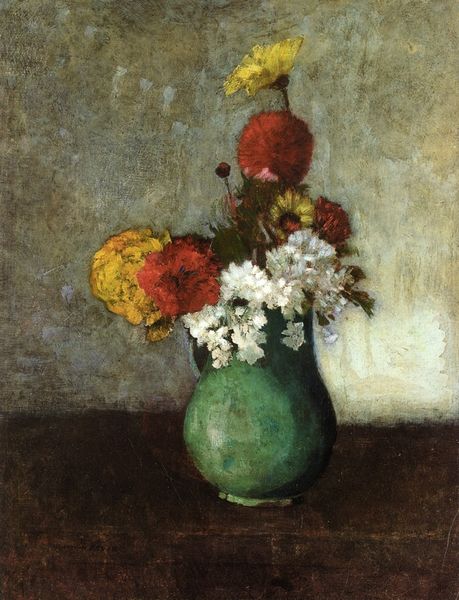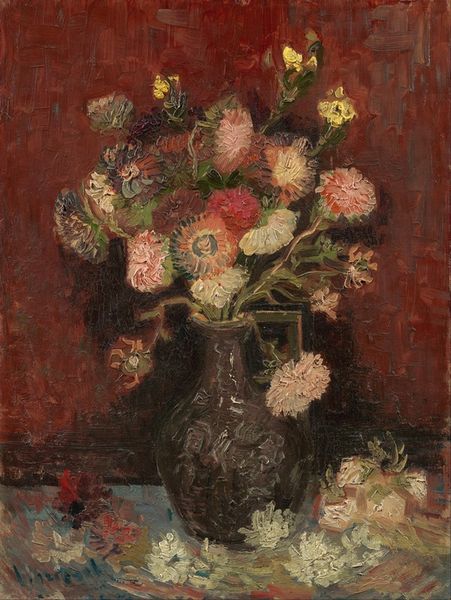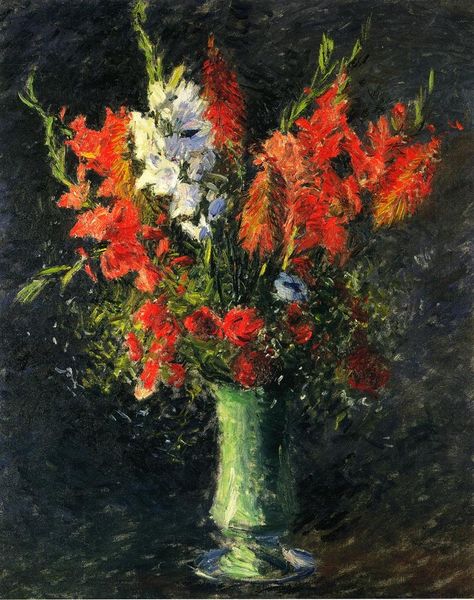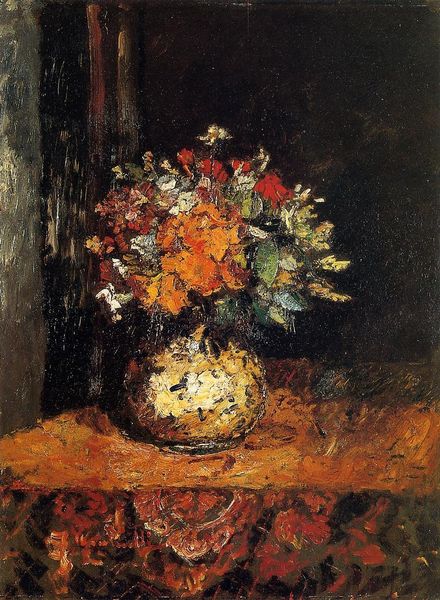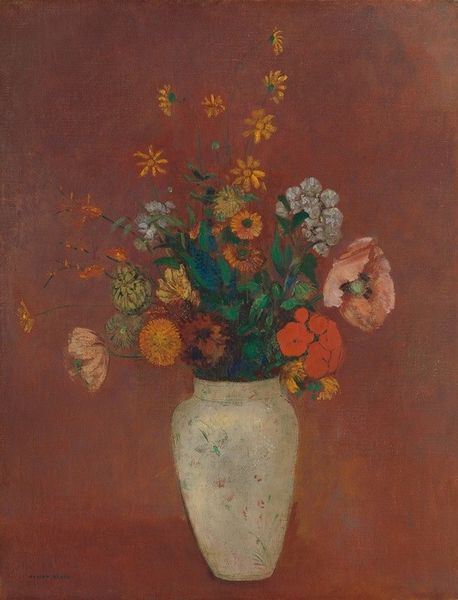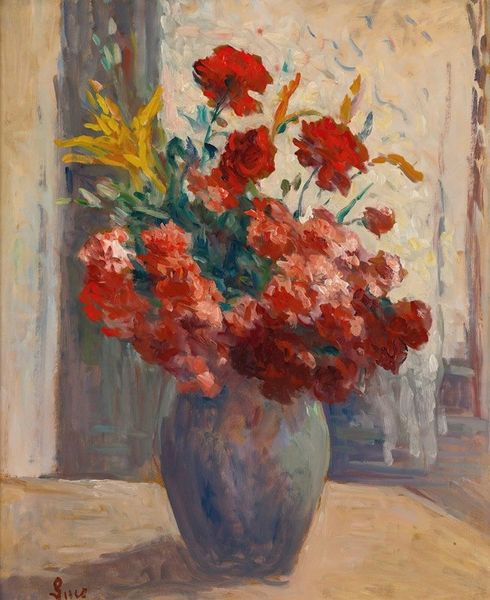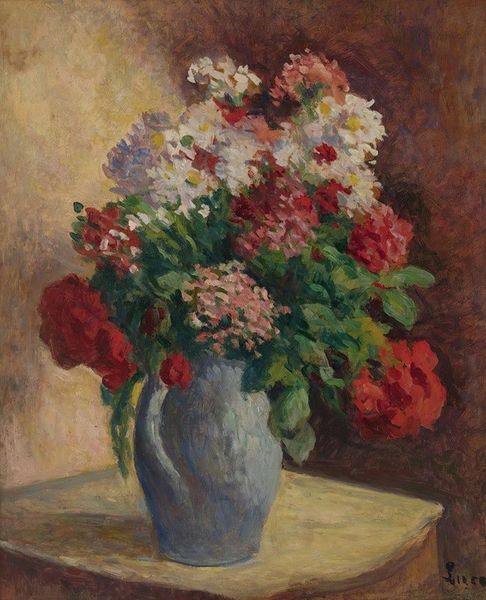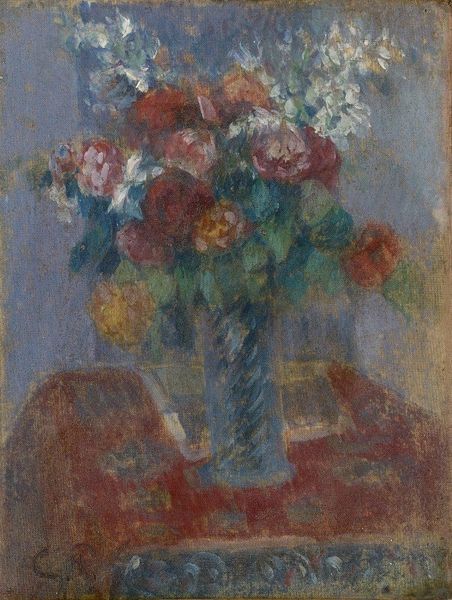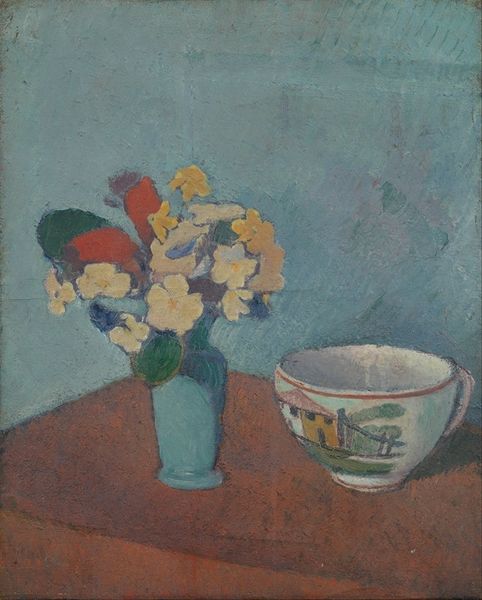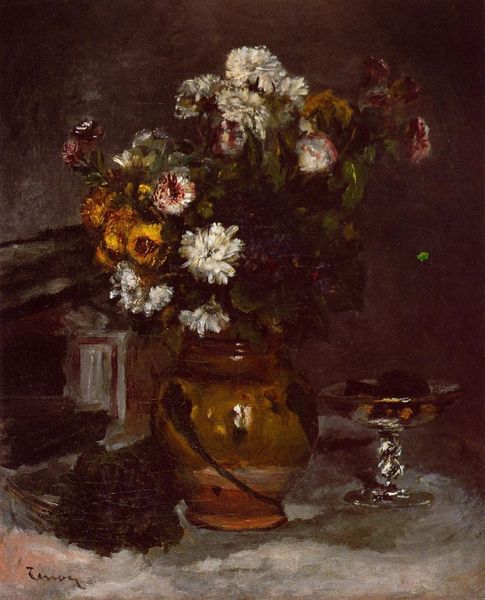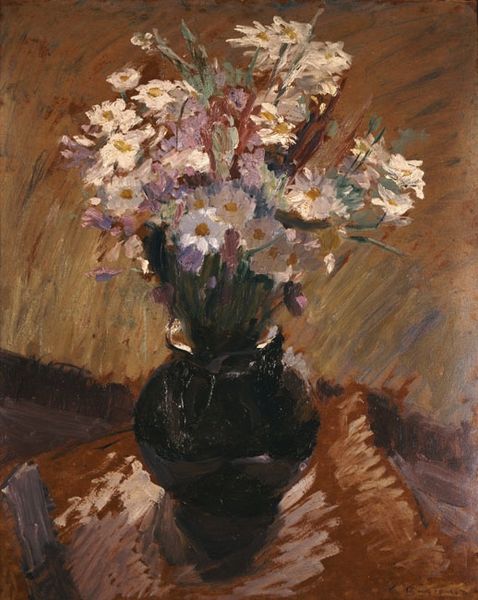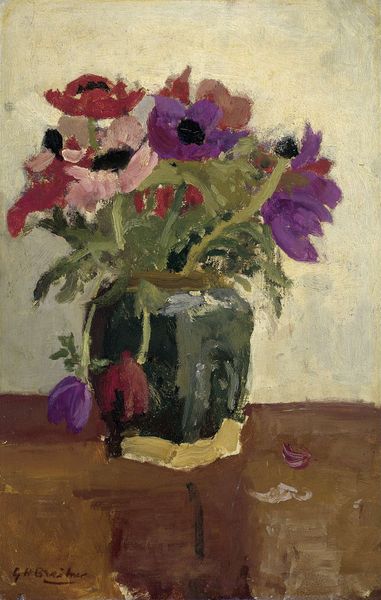
painting, oil-paint, impasto
#
fauvism
#
painting
#
oil-paint
#
oil painting
#
impasto
#
intimism
Copyright: Public domain
Curator: Welcome. Before us, we have "Deux Bouquets," which translates to "Two Bouquets," by Henri Manguin, recognized for his contributions to the Fauvist movement and the exploration of intimism through painting. Editor: It’s quite charming, this still life. There's a domestic stillness, a softness in the impasto application of the oils. I'm drawn to the contrast of the matte brown vase with the sheen of the smaller green one. Curator: Considering the period, Manguin would have been part of a broader avant-garde interest in simplifying forms and emphasizing colour. The intimacy of the still life invites consideration of domestic space and the role of women within it, aligning with larger cultural narratives around the home and femininity. Editor: Absolutely. The compositions is carefully constructed: observe how Manguin plays with the balance between the bouquets; their shapes mirrored yet contrasted. And look at the table's edge, how the planar dimension underscores the verticality of the blooms. It all points towards an elegant synthesis of line and volume. Curator: But consider how his chosen subject matter intersects with bourgeois life in France at the time, especially with the floral still life functioning as an affordable artwork option and decoration for women of the time, especially the bourgeoisie, who often collected intimist artwork like this to adorn their personal spaces and drawing rooms. Editor: Interesting point. Still, what resonates most is the purity of the painterly technique, which transcends temporal contexts. The use of color creates a very specific emotive response. I detect a melancholy but with an undertone of delight, stemming from the red and white flower placement against that neutral backdrop. Curator: Reflecting on the dialogue between domesticity, femininity and modern art gives one something to consider how paintings can contain political undercurrents or social undertones which speak silently but assuredly of the cultural politics during Manguin’s life and the place these kinds of painting inhabited in this social fabric. Editor: Yes, while those insights into cultural commentary have enriched my formalist read, I still return to my first experience here, an appreciation of the pictorial qualities and masterful rendering which, after all, are what captivated me initially.
Comments
No comments
Be the first to comment and join the conversation on the ultimate creative platform.
